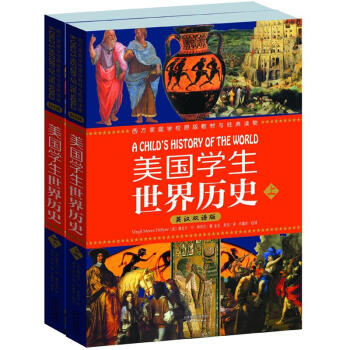
美国学生世界历史(英汉双语)(套装上下册) epub pdf mobi txt 电子书 下载 2025
美国学生世界历史(英汉双语)(套装上下册) epub pdf mobi txt 电子书 下载 2025
简体网页||繁体网页
下载链接1
下载链接2
下载链接3
发表于2025-05-23
商品介绍
美国学生世界历史(英汉双语)(套装上下册) epub pdf mobi txt 电子书 下载 2025
相关书籍
书籍描述
编辑推荐
海报:
内容简介
《美国学生世界历史(英汉双语·套装上下册)》让孩子知道一些他们来到这世界之前就已经发生的事情;带孩子走出以自我为中心、封闭在家的生活,这种生活显得过于重要,因为太贴近,就成为孩子们眼中的一切,使他们看不到外面的世界;开阔孩子的眼界,拓宽他们的视野,将过去时代的历史画面展现在他们面前;让他们熟悉历史上一些重大事件和伟人的名字,并把这些事和人在时间和空间上确定下来,作为将来系统学习的基础;向孩子提供一份历史编年档案,并附有要览,这样他们今后学习历史就可以参照这份档案。
以上所述就是写这一本世界历史故事的宗旨——维吉尔·M·希利尔。
作者简介
维吉尔·M·希利尔(Virgil Mores Hillyer,1875-1931),1875年出生于美国马萨诸塞州韦茅斯,他在华盛顿特区的"国会山"度过其童年,毕业于美国哈佛大学。他是美国著名教育家、卡尔佛特学校首任校长、美国家庭学校(HOMESCHOOL)课程体系创建者。
作为一位教育革新者,希利尔在美国国内和国际上获得了广泛声誉和影响力。他从事教育工作的同时,亲自为孩子们编写教材,在课堂上试讲并修订,受到学校和学生们的赞誉,不少教材至今仍被学校使用。如《美国学生世界地理》、《美国学生世界历史》、《美国学生艺术史》等。他一直探索家庭学校教育理念并设计其课程体系,写作了一本家庭学校教育手册——《在家教出好孩子》,成为父母教育孩子的指南。
内页插图
精彩书评
昨天一路继续阅读《美国学生世界历史》,全部读完。全书整体来说是本好书,就像我前面说过的那样,语言简洁,生动有趣,历史脉络清晰,从远古一直讲到现代。但也有一个明显缺陷,就是站在西方人的立场上书写历史,整本书与其说是世界历史,不如说是欧美历史比较确切。
但不管怎样,这本书(实际上是一个系列书籍,包括了历史、地理、文艺等)依然值得大家一读,轻松了解除东方外的世界历史和文明发展脉络。该书也适合我们的孩子一读,能够开阔孩子的视野,增加孩子必备的历史知识,尤其能够培养孩子的历史格局观。到现在为止,在我所知的范围内,好像中国还没有一本真正有趣的,专门为孩子们写的世界历史和中国历史的好书。我们的历史观,受制于各种教条,总忘不了归类、批判和灌输,而不是轻松地叙述和公正地把握人类文明发展的路径。
——俞敏洪先生撰文推荐(摘自《老俞闲话》)
目录
01 How Things Started 万物起源02 People Who Lived in Caves 穴居人
03 Fire! Fire!! Fire!!! 火!火!火!
04 From an Airplane 从飞机上往下看
05 Real History Begins 真正的历史从此开始
06 The Puzzle Writers in Egypt 埃及之谜的作者
07 The Tomb Builders 建造陵墓的人
08 A Rich Land Where There Was No Money 没有钱的富饶之地
09 The Jews Search For a Home 寻找家园的犹太人
10 Fairy-Tale Gods 神话故事中的众神
11 A Fairy-Tale War 神话故事中的战争
12 The Kings of the Jews 犹太国王
13 The People Who Made Our ABC's 发明字母ABC 的人
14 Hard as Nails 像铁钉一样坚硬
15 The Crown of Leaves 桂冠
16 A Bad Beginning 邪恶的开端
17 Kings with Corkscrew Curls 长着螺旋形卷发的国王们
18 A City of Wonders and Wickedness 奇迹和邪恶并存的城市
19 A Surprise Party 遭到突袭的宴会
20 The Other Side of the World: India 世界的另一边:印度
21 All the Way Around the World in China 中国人的世界
22 Rich Man, Poor Man 雅典的富人和穷人
23 Rome Kicks Out Her Kings 罗马人撵走了国王
24 Greece vs. Persia 希腊对波斯
25 Fighting Mad 战争狂
26 One Against a Thousand 以一挡千
27 The Golden Age 黄金时代
28 When Greek Meets Greek 当希腊人遇上希腊人
29 Wise Men and Otherwise 智者和愚人
30 A Boy King 少年国王
31 Picking a Fight 寻衅斗殴
32 The Boot Kicks and Stamps 靴子的反击和践踏
33 The New Champion of the World 新的世界冠军
34 The Noblest Roman of Them All 罗马人中的最高贵者
35 An Emperor Who Was Made a God 被看做神明的皇帝
36 Thine is the Kingdom, the Power, and the Glory 国度、权柄、荣耀,全是你的
37 Blood and Thunder 血和雷
38 A Good Emperor and a Bad Son 好皇帝和他的坏儿子
39 IHSV 靠服
40 Barbarian Invaders 野蛮的入侵者
41 Barbarians Meet the Champions of the World 野蛮人遭遇世界霸主
42 New Places-New Heroes 新地方,新英雄
43 Being Good 为 善
44 A Christian Kingdom in Africa 非洲的一个基督教王国
45 Muhammad and the Early Years of Islam 穆罕默德和初期的伊斯兰教
46 Arabian Days 阿拉伯时代
47 Two Empires, Two Emperors 两个帝国,两个皇帝
48 Getting a Start 启 动
49 The End of the World 世界末日
50 Real Castles 真正的城堡
51 Knights and Days of Chivalry 骑士和骑士制度时期
52 A Pirate's Great Grandson 海盗有个了不起的孙子
53 A Great Adventure 一次伟大的历险
54 Tick-Tack-Toe; Three Kings in a Row 画"连城"游戏,三个国王成一行
55 Three Kingdoms in West Africa 西非三个王国
56 Bibles Made of Stone and Glass 石头和玻璃制作的《圣经》
57 John, Whom Nobody Loved 没人喜欢的约翰
58 A Great Story Teller 一位了不起的讲故事的人
59 A Magic Needle and A Magic Powder 魔针和魔粉
60 Thelon Gest Wart Hate Verwas 历史上时间最长的战争
61 Print and Powder 印刷术和火药——新旧时代的交替
62 A Sailor Who Found a New World 一个发现"新"大陆的水手
63 Fortune Hunters 寻找财富的探险家
64 The Search for Gold and Adventure 寻金和探险
65 Along the Coast of East Africa 沿着东非海岸
66 Rebirth 再生
67 Christians Quarrel 基督徒的争吵
68 Queen Elizabeth 伊丽莎白女王
69 The Age of Elizabeth 伊丽莎白时代
70 James the Servant 仆人詹姆斯
71 A King Who Lost His Head 掉了脑袋的国王
72 Red Cap and Red Heels 红帽子和红鞋跟
73 A Self-Made Man 靠自己奋斗成功的人
74 A Prince Who Ran Away 逃跑的王子
75 America Gets Rid of Her King 美国摆脱了国王
76 Upside Down 天翻地覆
77 A Little Giant 矮小的巨人
78 Latin America and the Caribbean Islands 拉丁美洲和加勒比海群岛
79 From Pan and His Pipes to the Phonograph 从森林之神的排箫到留声机
80 The Daily Papers of 1854-1865 1854-1865 年的日报
81 Three New Postage Stamps 三张新邮票
82 The Age of Miracles 产生奇迹的时代
83 A Different Kind of Revolution 另一种革命
84 A World at War 陷入战争的世界
85 A Short Twenty Years 短短二十年
86 Modern Barbarians 现代“野蛮人”
87 Fighting the Dictators 对抗独裁者
88 A New Spirit in the World 世界新精神
89 Yesterday, Today, and Tomorrow 昨天、今天、明天
……
精彩书摘
02People Who Lived in Caves 穴居人
How do you suppose I know about all these things that took place so long ago?
I don't.
I'm only guessing about them.
But there are different kinds of guesses. If I hold out my two closed hands and ask you to guess which one has the penny in it, that is one kind of a guess.
Your guess might be right or it might be wrong. It would be just luck.
But there is another kind of guess. When there is snow on the ground and I see tracks of a boot in the snow, I guess that a person must have passed by, for boots don't usually walk without someone in them. That kind of guess is not just luck but common sense.
So we can guess about a great many things that have taken place long ago, even though there was no one there at the time to see them or tell about them.
We have dug down deep under the ground in different parts of the world and have found there-what do you suppose?
I don't believe you would ever guess.
We have found the heads of arrows and spears and hatchets.
The peculiar thing about these arrows and spears and hatchets is that they are not made of iron or steel, as you might expect, but of stone.
Now, we are sure that only human beings could have made and used such things, for birds and fish or other animals do not use hatchets or spears. We are also sure that these people must have lived long, long years ago before iron and steel were known, because it must have taken long, long years for these things to have become covered up so deep by dust and dirt. We have also found the bones of the people themselves, who died several million years ago, long before anyone began to write down history. The oldest bones we have ever found were in East Africa. We know that people long ago were working and playing, eating and fighting-doing many of the same things we are today-especially the fighting.
This time in the prehistory of the world, when people used such things made of stone, is therefore called the Stone Age.
Life was hard for Stone Age people. They didn't have all the things we are used to having today.
Some wild animals make houses. Foxes dig holes, beavers make houses of sticks and mud. These first people probably had no houses of any sort in which to live. They simply found any shelter they could. They found caves in the rocks or in the hillsides where they could get away from the cold and storms and wild animals. So men, women, and children of this time were called Cave People.
They spent their days hunting some animals and running and hiding from others. They caught animals by trapping them in a pit covered over with bushes, or they killed them with a club or a rock if they had a chance, or with stone headed arrows or hatchets. They even painted or cut pictures of these animals on the walls of their caves. Some of these pictures we can still see today.
They lived on berries and nuts and seeds. They robbed the nests of birds for the eggs, which they ate raw, for at first they had no fire with which to cook.
They liked to drink the warm blood of animals they killed, as you would a glass of milk.
They talked to each other by some sort of grunts or very simple words. They made clothes of skins of animals they killed, for there was no such thing as cloth.
These early people must have spent most of their time hunting for food or trying to get away from animals hunting them for food. They had no thick hide like an elephant to protect them; they did not grow a coat of fur like a bear to keep them warm; they could not run very fast, like a deer to escape their enemies; they were no match for an animal with sharp teeth and claws and strong muscles like a lion. It's a wonder any of them lived to grow up.
Stone Age people had two things that helped them more than sharp claws, or strong muscles, or tough skins. They had better brains than the animals. And they had hands instead of front feet. With their brains they could think. They could think of ways of
美国学生世界历史(英汉双语)(套装上下册) epub pdf mobi txt 电子书 下载 2025
美国学生世界历史(英汉双语)(套装上下册) 下载 epub mobi pdf txt 电子书 2025美国学生世界历史(英汉双语)(套装上下册) pdf 下载 mobi 下载 pub 下载 txt 电子书 下载 2025
美国学生世界历史(英汉双语)(套装上下册) mobi pdf epub txt 电子书 下载 2025
美国学生世界历史(英汉双语)(套装上下册) epub pdf mobi txt 电子书 下载读者评价
给孩子买的,很好。
评分在对比中才能发现新方法、新思想、新教法。双语书,温习英语作用明显。
评分很愉快的购物体验,很有意思的书,值得认真看。
评分在对比中才能发现新方法、新思想、新教法。双语书,温习英语作用明显。
评分学习地理的好工具。。。。
评分主要想增加孩子词汇量,读起来不难,孩子很喜欢
评分这本书让我深感:English is the key key to open this world!
评分与此同时,远处的狼湖之滨有一个弃儿赫尔格也在渐渐长大。虽然生活清苦,但他把生命当作礼物,活得兴高采烈。阴差阳错,赫尔格成了阿维德的替打小童,当阿维德犯错误时,赫尔格要代替他挨打。两个生命在此交汇,发生了谁也意想不到的事情……
评分确实像超市书,纸张质量一般。故事内容有吸引力,适合儿童阅读。
美国学生世界历史(英汉双语)(套装上下册) epub pdf mobi txt 电子书 下载 2025
美国学生世界历史(英汉双语)(套装上下册) epub pdf mobi txt 电子书 下载 2025
分享链接
相关书籍
-
![新编儿童英语入门(第1册)(DVD光盘) [3-6岁] pdf epub mobi 电子书 下载](/static/pix.jpg) 新编儿童英语入门(第1册)(DVD光盘) [3-6岁] epub pdf mobi txt 电子书 下载
新编儿童英语入门(第1册)(DVD光盘) [3-6岁] epub pdf mobi txt 电子书 下载 -
 黑眼睛·IELTS考试技能训练教程:听力(最新修订版 光盘版 含1MP3) epub pdf mobi txt 电子书 下载
黑眼睛·IELTS考试技能训练教程:听力(最新修订版 光盘版 含1MP3) epub pdf mobi txt 电子书 下载 -
 零起点英语金牌入门-英语初级入门自学教材 零基础英语学习教程书籍发音单词会话语法口语一本通 epub pdf mobi txt 电子书 下载
零起点英语金牌入门-英语初级入门自学教材 零基础英语学习教程书籍发音单词会话语法口语一本通 epub pdf mobi txt 电子书 下载 -
 1分钟英语快餐丛书·小学生1000单词一学就会:发音、单词双突破(循环速记版) epub pdf mobi txt 电子书 下载
1分钟英语快餐丛书·小学生1000单词一学就会:发音、单词双突破(循环速记版) epub pdf mobi txt 电子书 下载 -
 人人说英语-从ABC到流畅口语 零基础英语自学教程(赠书签,20元沪江学习卡) epub pdf mobi txt 电子书 下载
人人说英语-从ABC到流畅口语 零基础英语自学教程(赠书签,20元沪江学习卡) epub pdf mobi txt 电子书 下载 -
![语感启蒙:经典英文儿歌图画书第二辑(套装共7册) [3-8岁] pdf epub mobi 电子书 下载](/static/pix.jpg) 语感启蒙:经典英文儿歌图画书第二辑(套装共7册) [3-8岁] epub pdf mobi txt 电子书 下载
语感启蒙:经典英文儿歌图画书第二辑(套装共7册) [3-8岁] epub pdf mobi txt 电子书 下载 -
![大家的日语:中级1(学习辅导用书) [みんなの日本語] pdf epub mobi 电子书 下载](/static/pix.jpg) 大家的日语:中级1(学习辅导用书) [みんなの日本語] epub pdf mobi txt 电子书 下载
大家的日语:中级1(学习辅导用书) [みんなの日本語] epub pdf mobi txt 电子书 下载 -
 世界名著典藏系列:雾都孤儿(中英对照全译本) epub pdf mobi txt 电子书 下载
世界名著典藏系列:雾都孤儿(中英对照全译本) epub pdf mobi txt 电子书 下载 -
![新概念英语青少版学生用书(3A)(附MP3+DVD光盘2张) [Junior New Concept English] pdf epub mobi 电子书 下载](/static/pix.jpg) 新概念英语青少版学生用书(3A)(附MP3+DVD光盘2张) [Junior New Concept English] epub pdf mobi txt 电子书 下载
新概念英语青少版学生用书(3A)(附MP3+DVD光盘2张) [Junior New Concept English] epub pdf mobi txt 电子书 下载 -
 终极23000单词放口袋(附MP3光盘1张) epub pdf mobi txt 电子书 下载
终极23000单词放口袋(附MP3光盘1张) epub pdf mobi txt 电子书 下载 -
 马上说8000英语单词口袋书 英语口语 英语词汇单词入门书籍 零基础英语口语入门速成书 epub pdf mobi txt 电子书 下载
马上说8000英语单词口袋书 英语口语 英语词汇单词入门书籍 零基础英语口语入门速成书 epub pdf mobi txt 电子书 下载 -
 新东方 新东方词汇进阶Vocabulary Basic(修订版) epub pdf mobi txt 电子书 下载
新东方 新东方词汇进阶Vocabulary Basic(修订版) epub pdf mobi txt 电子书 下载 -
 用韩国小学课本学韩语40音 epub pdf mobi txt 电子书 下载
用韩国小学课本学韩语40音 epub pdf mobi txt 电子书 下载 -
 英语专四预测试卷 2018新题型 听力强化版 与改革后英语专业四级真题一致 华研外语 epub pdf mobi txt 电子书 下载
英语专四预测试卷 2018新题型 听力强化版 与改革后英语专业四级真题一致 华研外语 epub pdf mobi txt 电子书 下载 -
 英语快速自学入门 零起点口袋书:15000英语单词+英语口语马上说(套装2册) epub pdf mobi txt 电子书 下载
英语快速自学入门 零起点口袋书:15000英语单词+英语口语马上说(套装2册) epub pdf mobi txt 电子书 下载 -
 成功英语 中考英语阅读理解与完形填空 epub pdf mobi txt 电子书 下载
成功英语 中考英语阅读理解与完形填空 epub pdf mobi txt 电子书 下载 -
 全国外语翻译证书考试指定教材·英语翻译:三级笔译 epub pdf mobi txt 电子书 下载
全国外语翻译证书考试指定教材·英语翻译:三级笔译 epub pdf mobi txt 电子书 下载 -
 朗文袖珍英汉双解词典 epub pdf mobi txt 电子书 下载
朗文袖珍英汉双解词典 epub pdf mobi txt 电子书 下载 -
 新版学而思秘籍·初中英语阅读理解专项突破(八年级)(全国通用 初二) epub pdf mobi txt 电子书 下载
新版学而思秘籍·初中英语阅读理解专项突破(八年级)(全国通用 初二) epub pdf mobi txt 电子书 下载 -
![世界名著典藏系列:人间喜剧:巴尔扎克小说选(英文全本) [The Human Comedy Selected Works of Balzac] pdf epub mobi 电子书 下载](/static/pix.jpg) 世界名著典藏系列:人间喜剧:巴尔扎克小说选(英文全本) [The Human Comedy Selected Works of Balzac] epub pdf mobi txt 电子书 下载
世界名著典藏系列:人间喜剧:巴尔扎克小说选(英文全本) [The Human Comedy Selected Works of Balzac] epub pdf mobi txt 电子书 下载



![新编儿童英语入门(第1册)(DVD光盘) [3-6岁] pdf epub mobi 电子书 下载](https://pic.tinynews.org/10074371/c779f764-8026-485b-90cb-e5b5a21a4b72.jpg)


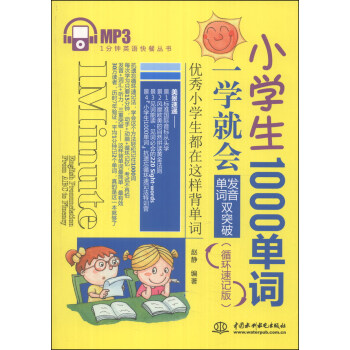

![语感启蒙:经典英文儿歌图画书第二辑(套装共7册) [3-8岁] pdf epub mobi 电子书 下载](https://pic.tinynews.org/11538406/54110698N9d58ee3c.jpg)
![大家的日语:中级1(学习辅导用书) [みんなの日本語] pdf epub mobi 电子书 下载](https://pic.tinynews.org/10214374/48da0f7c-4c52-47d8-9479-2d5b62b89271.jpg)
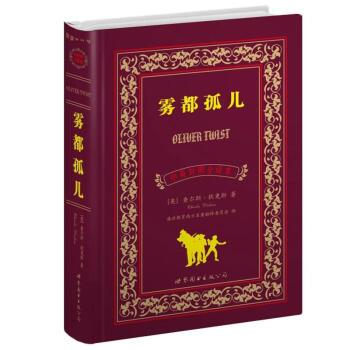
![新概念英语青少版学生用书(3A)(附MP3+DVD光盘2张) [Junior New Concept English] pdf epub mobi 电子书 下载](https://pic.tinynews.org/11222257/rBEhU1MhXCsIAAAAAAdcZxMNLw0AAKBqANTL5gAB1x_204.jpg)


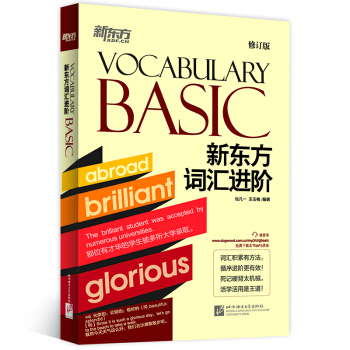



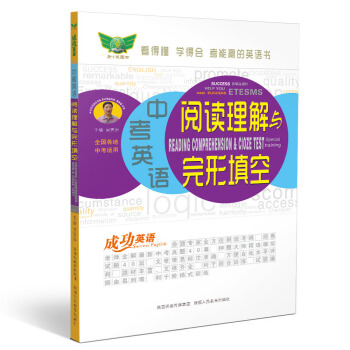
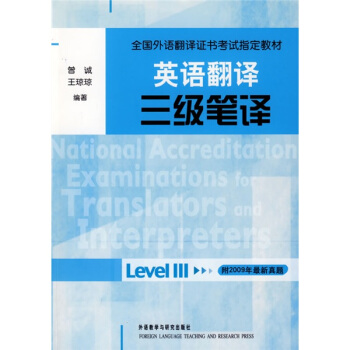
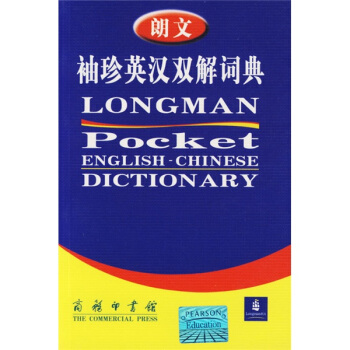

![世界名著典藏系列:人间喜剧:巴尔扎克小说选(英文全本) [The Human Comedy Selected Works of Balzac] pdf epub mobi 电子书 下载](https://pic.tinynews.org/10104594/rBEIC0_RuOMIAAAAAADhT0UTMS4AAAfjQJzMXMAAOFn046.jpg)